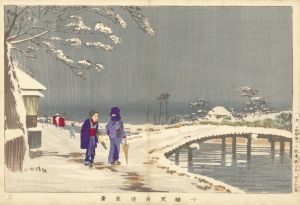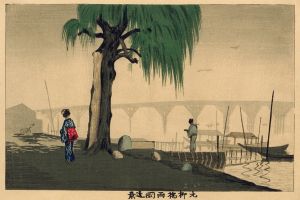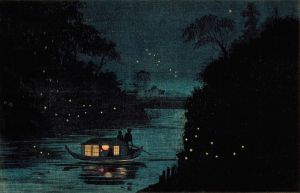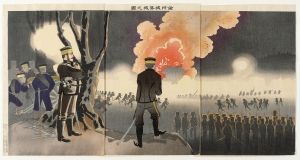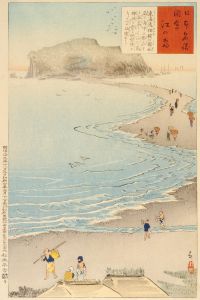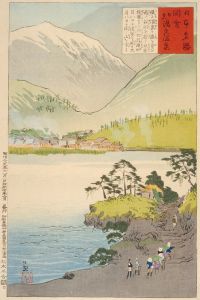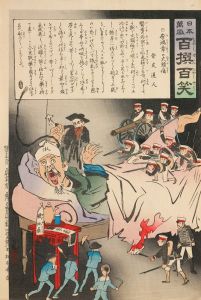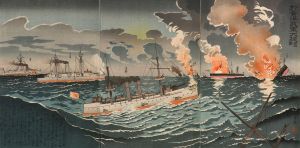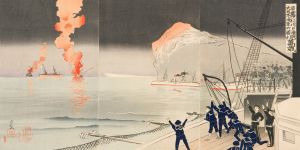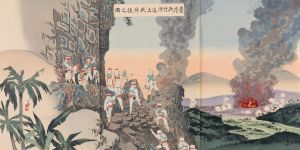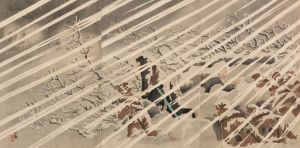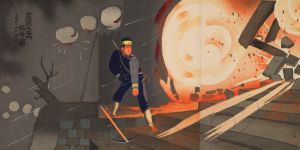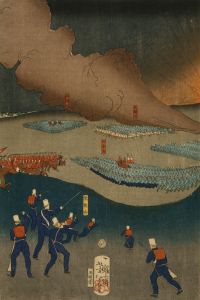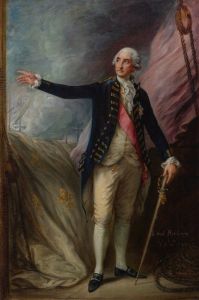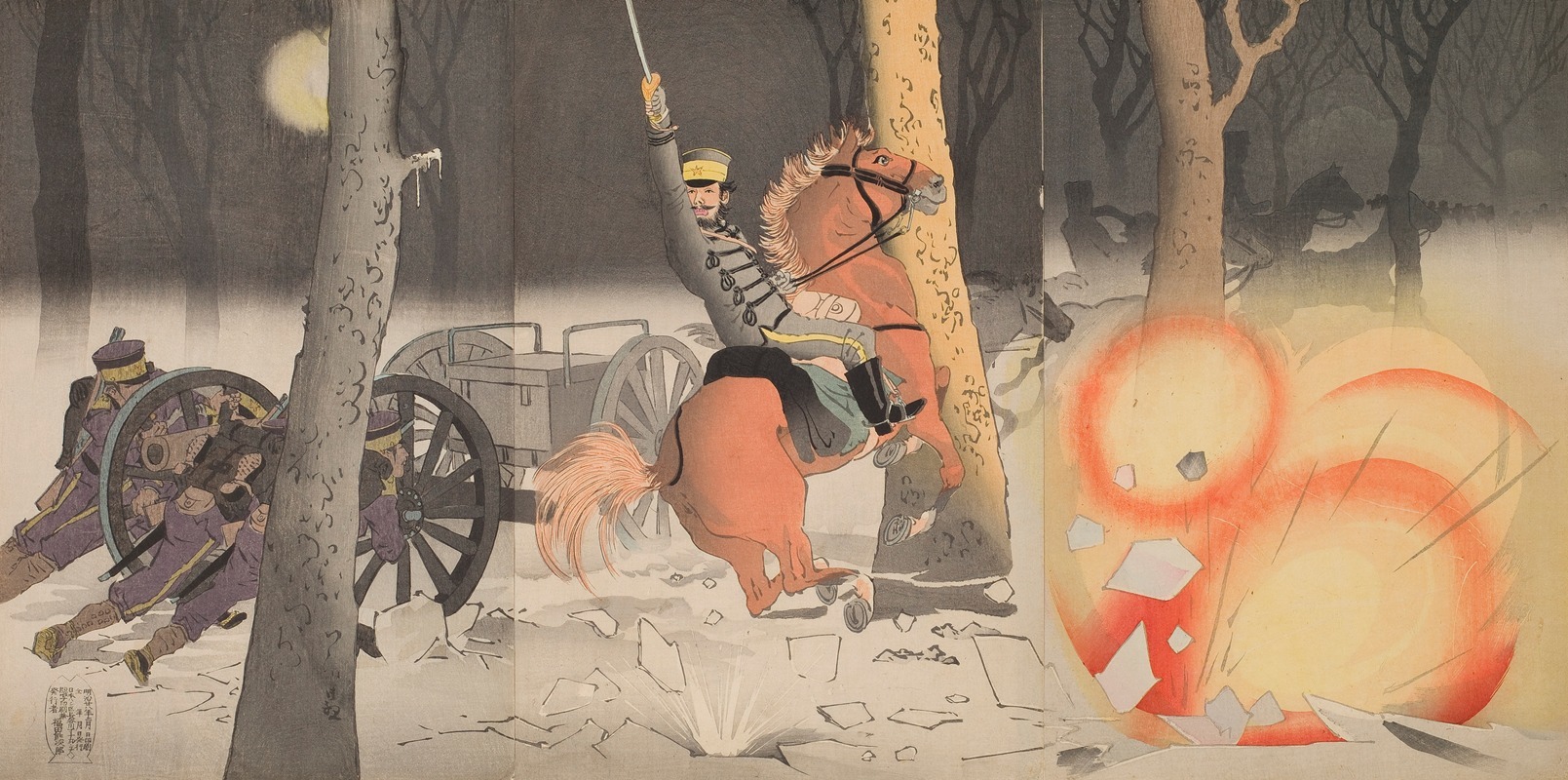
Ground Attack at Weihaiwei
A hand-painted replica of Kobayashi Kiyochika’s masterpiece Ground Attack at Weihaiwei, meticulously crafted by professional artists to capture the true essence of the original. Each piece is created with museum-quality canvas and rare mineral pigments, carefully painted by experienced artists with delicate brushstrokes and rich, layered colors to perfectly recreate the texture of the original artwork. Unlike machine-printed reproductions, this hand-painted version brings the painting to life, infused with the artist’s emotions and skill in every stroke. Whether for personal collection or home decoration, it instantly elevates the artistic atmosphere of any space.
"Ground Attack at Weihaiwei" is a woodblock print created by the renowned Japanese artist Kobayashi Kiyochika. This artwork is part of a series that depicts scenes from the First Sino-Japanese War (1894-1895), a conflict between the Qing Dynasty of China and the Empire of Japan primarily over influence in Korea. Kiyochika, known for his skillful use of light and shadow, as well as his ability to capture the drama of modern warfare, produced this print to document and celebrate Japanese military victories during the war.
The First Sino-Japanese War marked a significant shift in East Asian power dynamics, showcasing Japan's emergence as a modernized military power. The Battle of Weihaiwei, which took place in early 1895, was one of the pivotal engagements of the war. Weihaiwei, located on the Shandong Peninsula, was a strategic naval base for the Beiyang Fleet, the most modern part of the Qing navy. The Japanese forces aimed to neutralize this threat to secure their dominance in the region.
Kiyochika's "Ground Attack at Weihaiwei" captures the intensity and chaos of the battle. The print likely illustrates Japanese ground forces launching an assault on the fortifications at Weihaiwei. Kiyochika's work is characterized by its dynamic composition and the use of vibrant colors to convey the energy and movement of the scene. The artist often employed Western techniques of perspective and shading, which he combined with traditional Japanese woodblock printing methods, resulting in a unique style that effectively communicated the modernity and technological advancements of the Japanese military.
This print, like many others in Kiyochika's series, served both as a piece of art and as wartime propaganda. It was intended to boost morale among the Japanese public and to reinforce the perception of Japan as a rising power capable of defeating a larger and historically dominant neighbor. The depiction of Japanese soldiers in action, often portrayed heroically and with a sense of purpose, contributed to the nationalistic fervor of the time.
Kobayashi Kiyochika (1847-1915) was an influential figure in the world of Japanese art, particularly known for his ukiyo-e prints. His works often reflect the rapid modernization of Japan during the Meiji era, capturing the intersection of traditional Japanese culture and Western influences. Kiyochika's prints from the First Sino-Japanese War are considered significant historical documents, providing insight into the period's military history and the cultural mindset of Japan during its transformation into a modern state.
"Ground Attack at Weihaiwei" remains an important example of Kiyochika's contribution to the art of war reportage through woodblock prints. It stands as a testament to the artist's ability to blend artistic expression with historical documentation, offering viewers a glimpse into a critical moment in East Asian history.





